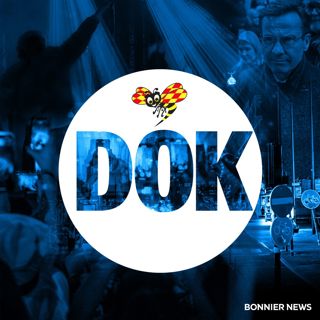
Navigating the Resilient Landscape of Global Fashion: Luxury, Digital Commerce, and Emerging Markets
Global fashion is ending the year in a mixed but resilient position, with growth led by luxury, digital commerce, and emerging markets, alongside pressure from costs and changing consumer behavior.New market data this week suggests that the global luxury fashion market, valued at about 258 billion dollars in 2024, is projected to reach roughly 266 billion in 2025 and 312 billion by 2030, a steady annual growth of just over 3 percent. This continues the post pandemic rebound but at a slower, more disciplined pace, with brands leaning on higher prices, exclusivity, and greater productivity rather than pure volume growth. Consumers with higher incomes are still spending, but are trading up selectively, prioritizing quality, brand heritage, and sustainable materials.Across apparel more broadly, women’s wear remains a core growth engine, with the global women’s apparel market recently estimated at just over one trillion dollars in 2024 and on track to expand significantly by 2030. This reflects a continuing shift toward versatile, comfort driven clothing suitable for hybrid work and social lives, and supports investment in inclusive sizing and technical fabrics.Digitally, major brand owners are racing to consolidate marketplace operations and capture social commerce demand. In the past 48 hours, Authentic Brands Group, which owns labels such as Reebok, Champion, and Forever 21, named Pattern Group as its global ecommerce marketplace accelerator and premier TikTok Shop partner. Pattern will centralize inventory planning, forecasting, fulfillment, and brand protection across platforms such as TikTok Shop, Amazon, Walmart, and Zalando, using AI tools to fight unauthorized sellers and tailor content by marketplace. This underscores how much fashion purchasing has shifted to platforms where entertainment, discovery, and checkout now blend seamlessly.Regionally, Europe remains a powerhouse: its textile and fashion sector generated more than 200 billion euros in turnover in 2023 and employs over 1.7 million people, and 2025 projections for the United Kingdom alone point to almost 89 billion dollars in apparel revenue, with fashion accounting for close to one third of all ecommerce. At the same time, brands are looking to faster growing markets such as India, where new partnerships are expanding premium and kidswear offerings.Consumer sentiment remains cautious in the mass and mid market, pushing retailers toward sharper promotions, holiday storytelling that leans into nostalgia and emotional reassurance, and tighter inventory management to avoid markdown driven margin erosion. Industry leaders are responding by doubling down on sustainability claims, capsule collections, AI supported personalization, and closer control of global distribution, aiming to protect brand equity while navigating slower, but still positive, growth.For great deals today, check out https://amzn.to/44ci4hQThis content was created in partnership and with the help of Artificial Intelligence AI
11 Dec 3min

Fashion's Adaptive State: Slower Growth, Beauty Pivot, and Inclusive Curation
Global fashion is ending the year in a mixed but adaptive state, with the last 48 hours underscoring three big themes: slower core fashion growth, a pivot to beauty and lifestyle, and a sharper focus on value, curation, and inclusivity.Recent data from 2025 shows fashion and leather goods launched fewer store openings, pop ups, and other retail activations this year, down about 9 percent versus the first half of 2024, while beauty grew these initiatives by roughly 13 percent, led by Asia Pacific and the Middle East and North Africa regions.[3] China still accounts for about one third of global fashion related activations, ahead of Europe and North America, confirming its role as the key physical retail engine.[3]Against this slowdown, brands are leaning into collaborations, luxury curation, and direct client relationships. Gap just announced a 20 piece Gap and Summer Fridays holiday capsule, blending cozy loungewear with a beauty led aesthetic, priced from 28 to 98 dollars and rolling out across North America and select international markets.[2][6] Pacsun and the Metropolitan Museum of Art launched a new Cloisters Holiday Collection, with apparel and accessories from 35 to 150 dollars, explicitly framed as a response to rising demand for elevated but accessible fashion among young consumers.[4]At the luxury end, online retailer FWRD, part of Revolve, reported a 37 percent year over year increase in gross profit in the third quarter of 2025 and more than 100 percent growth in its personal shopping program sales over the first nine months of the year, evidence that high spending clients are paying for curation and service even in a volatile market.[5] FWRD’s appointment of Rosie Huntington Whiteley as Fashion Director signals how celebrity led storytelling is being used to defend pricing power and market share.[5]Consumer behavior is shifting toward comfort, resale, and inclusivity, but not always sustainably. A new Yale study finds frequent secondhand shoppers often buy more new clothing overall, expanding rather than shrinking fashion’s carbon footprint.[9] At the same time, research from the University of Nevada shows that inclusive sizing increases brand trust and purchase intent across all shoppers, reinforcing why size expansion is becoming a commercial, not just ethical, imperative.[13]Compared with earlier 2025 reporting that highlighted simple post pandemic recovery, the current picture is more complex: core fashion retail is cooling, beauty and lifestyle adjacencies are powering growth, and leading players are responding with tighter assortments, experience driven retail, and partnerships that stretch beyond traditional fashion boundaries.For great deals today, check out https://amzn.to/44ci4hQThis content was created in partnership and with the help of Artificial Intelligence AI
9 Dec 2min

Fashion Industry Cautiously Optimistic: Tech, Sustainability, and Selective Spending
The global fashion industry is closing the week with cautious optimism, shaped by technology investments, sustainability rules, and selective consumer spending.Over the past 48 hours, the biggest strategic moves have come from beauty and apparel leaders tightening their focus and balance sheets. LOréal is doubling its stake in dermatology specialist Galderma to 20 percent, signaling a shift toward higher margin, science based skincare as growth in traditional cosmetics and some fashion categories slows.[14] H and M has continued its share buyback program, reaching about 2.75 million treasury shares by December 5, a sign of confidence in its valuation even as European apparel demand remains uneven.[9]On the innovation front, fashion technology is moving center stage. SpreeAI announced new commercial scale rollouts of its virtual try on platform with global retailers, highlighting retailer demand for better online fit tools to reduce returns and boost conversion.[6] This follows a broader 2025 trend of brands testing AI driven styling, sizing, and personalization to compensate for weaker store traffic and rising marketing costs.In luxury and high fashion, regulation and branding are reshaping strategy. The CFDA has now banned fur from New York Fashion Week, cementing a sustainability and ethics driven shift first visible in European houses several seasons ago.[1][12] Major luxury brands continue to invest in storytelling campaigns, Olympic partnerships, and gaming avatars to keep affluent, experience focused consumers engaged.[1]Consumer behavior this holiday period is more selective than in 2022 and 2023. Deloitte data referenced by Luxury Daily shows Black Friday and Cyber Monday traffic up, with Gen Z driving much of the growth, but brands like Nike, Ralph Lauren, Coach, and Levi Strauss are intentionally scaling back deep promotions to protect margins in the face of higher tariffs and input costs.[1][2] Discounting is now highly targeted, as seen in aggressive December apparel promotions with cuts up to roughly 70 percent in some uniform and performance categories, while core fashion and luxury lines hold price.[4]Supply chain risk remains a boardroom theme. Industry analysts note that years of supplier diversification have often added cost and complexity rather than eliminating risk, pushing brands to prioritize fewer, more resilient partners and to use data more aggressively in inventory decisions.[11] Compared with late 2024, current conditions show slower top line growth but more disciplined pricing, tighter inventory, and heavier bets on technology and dermatology adjacent beauty as fashion leaders adapt to an environment of cautious, value conscious consumers.For great deals today, check out https://amzn.to/44ci4hQThis content was created in partnership and with the help of Artificial Intelligence AI
8 Dec 3min

Fashion's Transformative Shifts: Consolidation, Sustainability, and Cultural Relevance
Over the past 48 hours, the fashion industry has witnessed several transformative developments reshaping the competitive landscape.The most significant development came on December 1st, 2025, when Gildan Activewear completed its acquisition of HanesBrands, marking a major turning point for the Canadian manufacturer. This deal substantially boosts Gildan's scale and strengthens its competitive position in key international markets while expanding its global footprint across activewear and innerwear categories.In parallel, H&M and Stella McCartney announced a strategic reunion partnership set for Spring 2026, rekindling a collaboration that began two decades ago. What makes this partnership noteworthy is its focus on certified and recycled materials, with the collection drawing entirely on responsibly sourced fibers. The collaboration extends beyond design to establish an industry Insights Board aimed at driving governance, animal welfare standards, and innovation in textile alternatives. This reflects rising investor and regulatory pressure on fashion brands to demonstrate measurable progress on material use, transparency, and climate strategies.Consumer behavior has also shifted noticeably. Black Friday 2025 data reveals that average global discount rates rose to 25 percent, with discounts arriving earlier than in previous years. Loyalty programme sign-ups doubled compared to 2024 as brands leaned into member-only offers, indicating a strategic pivot toward customer retention.In the footwear sector, Saucony's parent company Wolverine Worldwide was honored as Company of the Year at the Footwear News Achievement Awards on December 3rd. The announcement coincides with Saucony launching a collaboration with Grammy-nominated artist Westside Gunn for a limited edition ProGrid Triumph 4 release, demonstrating how brands are increasingly leveraging cultural partnerships to drive consumer engagement.These 48-hour developments underscore three critical industry trends. First, consolidation is accelerating as larger players expand scale through acquisitions. Second, sustainability has transitioned from a marketing narrative to a governance imperative, driven by regulatory pressure particularly from the EU. Third, brands are diversifying revenue streams through collaborations with cultural figures and premium designers while simultaneously competing on value through enhanced loyalty programs. The industry is clearly navigating a transition where scale, sustainability compliance, and cultural relevance are becoming essential competitive differentiators.For great deals today, check out https://amzn.to/44ci4hQThis content was created in partnership and with the help of Artificial Intelligence AI
4 Dec 2min

Fashion's Sustainable Shift: Luxury Consolidation and Conscious Consumerism in 2025
FASHION INDUSTRY ANALYSIS: DECEMBER 3, 2025Over the past 48 hours, the fashion industry has witnessed significant strategic developments reshaping the luxury and mainstream sectors.MAJOR PARTNERSHIPS AND DEALSH&M announced a landmark collaboration with British designer Stella McCartney, marking a reconceptualization of designer partnerships. The collection launches in Spring 2026 and emphasizes sustainable, responsible materials with many pieces made from recycled fabrics. This represents a major shift 20 years after their 2005 debut collaboration. The partnership extends beyond product creation to include an Insights Board designed to drive industry-wide sustainability dialogue and innovation. McCartney stated the collaboration provides an opportunity to assess progress on cruelty-free practices and conscious design.Prada has completed its 1.45 billion dollar acquisition of Versace, consolidating two iconic Italian fashion houses under one strategic umbrella. This major consolidation reflects the luxury sector's ongoing trend toward vertical integration and brand portfolio expansion.EMERGING COLLECTIONS AND PRODUCT LAUNCHESAcross Southeast Asia, designers are balancing craft with playfulness. Indonesia's Peggy Hartanto launched a Wicked-inspired collection featuring scalloped detailing and bold colors. Manila-based JOS Mundo showcased handcrafted footwear at its Holiday Showroom. Meraki Bowy debuted Bowy, a new menswear line launching December 13-14, emphasizing textured, craft-driven aesthetics with relaxed tailoring.In the United States, Canada Goose released its Snow Goose Fall/Winter 2025 collection featuring Willie Nelson as style inspiration, reimagining winter tones from dark to fluorescent and pastel palettes. Stone Island and Porter created limited edition bags and an apparel line featuring jewel-toned designs with corrosive treatments. Japanese label Sacai dropped a holiday collection characterized by studs, leather flight jackets, and silver hardware patches.CONSUMER BEHAVIOR TRENDSThe luxury sector continues emphasizing sustainability as a purchasing driver. Second-hand fashion platforms like Vinted report booming activity, with consumers increasingly embracing pre-loved clothing. This reflects broader shifts toward conscious consumption and circular fashion models.Milan fashion week rejected trend-heavy narratives for pragmatic, grounded collections, signaling industry recalibration toward wearability over spectacle.MARKET OUTLOOKDecember 2025 represents a turning point where sustainability commitments, strategic consolidations, and consumer consciousness are reshaping fashion's commercial landscape. Industry leaders are responding to market pressures by emphasizing transparency, responsible sourcing, and cross-sector collaborations that extend beyond traditional product development.For great deals today, check out https://amzn.to/44ci4hQThis content was created in partnership and with the help of Artificial Intelligence AI
3 Dec 3min

Fashion's Perfect Storm: Supply Chain Strains, Regulatory Pressures, and Sustainable Shifts in 2025
FASHION INDUSTRY STATE ANALYSIS: DECEMBER 1-2, 2025The global fashion industry faces significant headwinds as supply chain disruptions and regulatory pressures intensify. As of October 2025, U.S. retail companies announced 88,664 job cuts, representing a 145 percent increase compared to 2024. This marks the highest number of job cuts across all U.S. sectors in over 20 years, driven by multiple factors including tariff pressures, automation adoption, and AI integration across corporate operations.Supply chain strain continues to escalate across the industry. Global commodity prices remain elevated due to geopolitical tensions, climate disasters, and logistics bottlenecks. Port congestion has reached three-month highs in Asia, Europe, and the Americas, while freight costs stay substantially higher than 2024 levels. A mine accident in 2025 reduced global copper output by 591,000 metric tons, pushing prices to 15-month highs. These pressures disproportionately affect fast-fashion retailers operating on thin margins, with rising shipping costs and inventory delays threatening profitability.Regulatory scrutiny is intensifying worldwide. The European Union recently adopted a greenwashing ban, requiring fashion brands to provide verified proof of sustainable efforts or cease making environmental claims. Under Extended Producer Responsibility policies, EU brands must now manage the full lifecycle and waste management of their clothing. Meanwhile, Texas Attorney General Ken Paxton launched a formal investigation into Shein over unsafe products, unethical labor practices, and misleading business conduct, following similar European regulatory actions.Despite challenges, sustainable fashion gains momentum. Lagos Fashion Week was named a finalist for the 2025 Earthshot Prize in the "Build a Waste-Free World" category, positioning African fashion as a sustainability leader. The event showcased circular design elements and cultural storytelling as core values.M&A activity continues as companies expand internationally. Fashionphile acquired Luxe Collective's intellectual property, customer database, and social assets in October 2025, launching Fashionphile UK with operations under LuxeCollectiveFashion.com. The acquisition marks Fashionphile's strategic entry into European markets.Consumer behavior is shifting toward affordable, sustainable options including resale and thrift pieces as disposable income decreases. Industry leaders must navigate tariff uncertainty, automation pressures, and regulatory compliance while pivoting toward sustainability to maintain market position.For great deals today, check out https://amzn.to/44ci4hQThis content was created in partnership and with the help of Artificial Intelligence AI
2 Dec 3min

Black Friday 2025: Shifting Shopper Priorities and the Evolution of Retail
US BLACK FRIDAY SHOWS SHIFTING CONSUMER BEHAVIOR AS SPENDING PATTERNS TRANSFORMThe American fashion retail landscape reveals a striking transformation as Black Friday 2025 data demonstrates evolving shopper priorities. Mastercard SpendingPulse reports overall US retail sales rose 4.1 percent year-over-year, but the composition tells a more nuanced story about consumer discipline and value consciousness.The most dramatic shift appeared in foot traffic patterns. In-store visits declined 5.3 percent compared to 2024, with a 3.6 percent drop specifically on Black Friday itself. However, this represents intentional shopping rather than disinterest. Consumers demonstrated precision buying, with foot traffic actually declining more sharply from Sunday through Wednesday at 6.2 percent, confirming that Black Friday retained its appeal as a value event worth visiting.Online shopping accelerated significantly, with e-commerce sales jumping 10.4 percent excluding automobiles. This surge reflects consumer preference for speed and convenience, with retailers reporting seamless checkout experiences across devices driving purchases. Shoppers clearly valued the efficiency of digital shopping over traditional in-store browsing.Apparel emerged as the strongest performer among all categories. Fashion spending climbed 5.7 percent overall, with online apparel up 6.1 percent and in-store up 5.4 percent. Seasonal factors including chilly temperatures combined with value-driven promotions encouraged wardrobe refreshes. Jewelry also performed well at 2.75 percent growth, suggesting consumers remained willing to invest in gift items despite economic caution.RetailNext's analysis emphasizes that this period marks a fundamental shift away from impulse-driven shopping. Rising prices, tariff concerns, and tighter household budgets pushed consumers toward deliberate value calculations. Joe Shasteen, Global Head of Advanced Analytics at RetailNext, noted that shoppers now demand proof that promotional events justify leaving their homes.Retailers who built promotional momentum throughout November rather than concentrating efforts on Black Friday alone reported stronger in-store performance. This suggests successful merchants are transitioning from single-day spectacles to month-long engagement strategies.Fashion industry leaders are responding by emphasizing value propositions and seamless omnichannel experiences. The data indicates that Black Friday 2025 did not diminish holiday shopping; rather, it fundamentally altered how retailers must approach seasonal commerce, prioritizing authentic value and convenience over traditional promotional frenzy.For great deals today, check out https://amzn.to/44ci4hQThis content was created in partnership and with the help of Artificial Intelligence AI
1 Dec 2min

Fashion Industry Navigates Shifting Trends: Resilience in Athleisure, Discount Strategies, and Sustainability Regulations
FASHION INDUSTRY STATE ANALYSIS - NOVEMBER 28, 2025The fashion industry continues navigating a complex landscape marked by contrasting market dynamics and shifting consumer priorities. Over the past 48 hours, several critical developments have emerged that define the sector's current trajectory.Consumer confidence in the United States has reached its lowest point in seven months, with the Expectations Index falling to 63.2, remaining below the 80 threshold that historically signals recession risk. This pessimism directly impacts fashion retail, as American shoppers express concerns about inflation, tariffs, and overall economic uncertainty. The median inflation expectation has climbed to 4.8 percent over the next 12 months, influencing purchasing decisions across the apparel segment.Concurrently, the functional apparel market demonstrates resilience, with projections reaching 623.2 billion dollars by 2032, driven by millennial preference for active lifestyles and athleisure adoption. Sportswear segments continue commanding major market share, though volatile raw material costs and counterfeit brands remain significant headwinds.Black Friday 2025 has activated retail momentum, with major players implementing strategic promotional approaches. Abercrombie & Fitch increased discounts to 30 percent, surpassing last year's 25 percent offering. Reformation expanded its sitewide sale to 25 percent through December 1st, while Meshki offered 30 to 60 percent reductions. Notably, major brands including Nike, Ralph Lauren, Coach, and Levi Strauss are simultaneously scaling back promotions to mitigate tariff impacts, creating a bifurcated discount strategy across the industry.Strategic partnerships accelerated recently, with Authentic Brands Group partnering with European distributor Orbico to expand the Dockers brand across Italy, Spain, Portugal, and the UK. This move capitalizes on Dockers' established European equity following Authentic's May acquisition from Levi Strauss.Global fashion sales surged 5.2 percent in the first nine months of 2025, reaching 222.72 billion dollars. However, geographic imbalances persist, with India experiencing a 3.6 percent decline in clothing exports and an 8.1 percent footwear export decrease between January and October. The denim market specifically targets 121.76 billion dollars by 2030, posting over 6 percent annual growth despite cotton prices climbing 3 percent over two years.The industry simultaneously confronts structural transformation, with consumer preferences shifting from physical goods toward experiences. European regulatory developments continue reshaping competitive dynamics, with the EU's upcoming 2026 regulation establishing unified standards for recycled materials while sustainability reporting requirements expand.These 48 hours reflect an industry balancing promotional pressures against macroeconomic headwinds while pursuing strategic geographic expansion and product innovation across functional and sustainable segments.For great deals today, check out https://amzn.to/44ci4hQThis content was created in partnership and with the help of Artificial Intelligence AI
28 Nov 3min





















